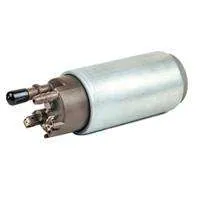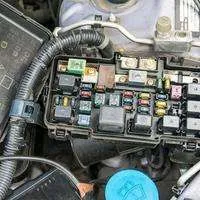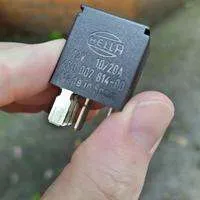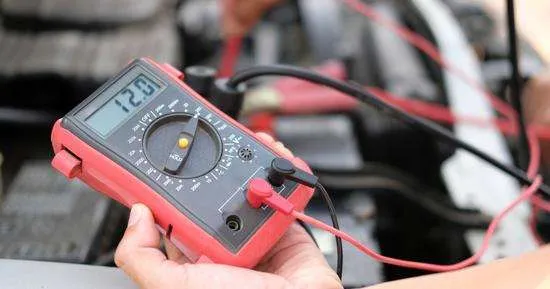A fuel pump is a crucial part of any vehicle and can be quite challenging to troubleshoot. This tutorial describes how to test the fuel pump with a multimeter and tell whether the fuel pump is working correctly or not.
In an internal combustion engine, a fuel pump transfers fuel from the fuel tank to the carburetor. It pumps the required fuel from the fuel tank to the engine at a specific pressure. The fuel is carried through a pipe and is mixed with air in the carburetor.
Common signs of a bad fuel pump are an overheating fuel pump, poor mileage, noise from the fuel tank, power loss, or your vehicle can turn off after some time due to overheating.
We can test the fuel pump with a multimeter to know if the fuel pump and relay are fine.
Let’s head toward testing:
Table of Contents
ToggleHow to test a fuel pump with a multimeter?
To test a fuel pump, we’ll measure voltage in the live and ground wire of the fuel pump connector and resistance in the fuse.
- To measure voltage, set your multimeter to DC voltage. Rotate the ignition key in the ON position. Connect the red probe to the ground wire and the black probe to any ground terminal. The multimeter should read 12V in the live wire in a fine fuel pump.
- Remove the red probe from the live wire and connect it to the ground wire. In the ground wire, an OK fuel pump should read 12V.
- Also, check the continuity in the fuse.
Follow the step-by-step guide below:
Locate The Fuel Pump
A fuel pump is located in front of the engine bay near the battery. In modern gas engines, fuel pumps can be located in the fuel tank. After locating the fuel pump, disconnect the wires from the connector.
-
Set your multimeter
Set your multimeter to DC voltage at 20V range as the car battery is 12V.
Now turn your vehicle’s ignition key in the On position.
-
Connect the Multimeter to the Fuel Pump connector
Connect the red multimeter probe to the live wire in the connector, which is often yellow-colored. Connect the red probe to the ground wire that is black colored or to any ground point in your vehicle.
-
Evaluate Voltage Reading
Make sure to follow the right order by connecting the red probe to the live wire and the black probe to the ground wire or terminal. If the probe connection is in the opposite direction, the multimeter will show negative voltage.
Your multimeter is expected to read around 12V, equal to the battery’s voltage. If the voltage reading drops above .5 to 1 volt, the fuel pump wiring is damaged, and the maximum current does not reach the pump. A low-charged battery can also signal poor voltage in the fuel pump. So, also test the battery’s voltage and check if the battery is fully charged or not.
-
Test Ground Connection
After checking the voltage, it’s time to measure the voltage or resistance in the ground wire. For this, touch the red probe to the ground wire and the black wire to any ground terminal or point in your car.
The ground wire should have around 0V, and if the multimeter reads a voltage quite higher than .1 V, the ground wire is damaged, and the current is leaking.
Test continuity in the fuel pump fuse
A faulty fuel pump fuse can cause the fuel pump’s poor performance. Check the fuse box under the hood and locate the fuel pump fuse.
Remove the fuel pump fuse from the fuse box. Set your multimeter to resistance and connect the multimeter probes to both ends of the fuse.
Your fuel pump fuse is OK if the multimeter reads between 0 and .5 ohms. If the multimeter reads OL, it means that the fuse’s central wire is broken.
How to test the fuel pump relay?
You can find the fuel pump relay inside the fuse box under the dashboard or close to the battery. The fuel pump relay is important in carrying current from the fuel pump tank to the engine.
The fuel pump relay provides power to the fuel pump to perform its functions. If the fuel pump relay is bad, the fuel pump also doesn’t work.
Test voltage in the Fuel Pump Relay
To test the fuel pump, we’ll test the voltage supply with a multimeter and evaluate the condition of the relay circuit.
Disconnect the fuel pump relay’s harness(connector). A fuel pump relay has 4 pins.
- Ground pin
- Input voltage pin
- The load pin (goes to the fuel pump)
- Battery pin
Now we have to connect our fuel pump relay pins with a power source such as a battery. You can use your car battery. Take your fuel pump relay to the battery, connect the positive battery terminal to the input voltage pin and the negative battery terminal to the ground pin. Use alligator clips to connect relay pins to the ground pins.
Connect your multimeter red probe to the battery pin and the black probe to the load pin. The multimeter should read around 12V or equal to the battery that you have connected.
If the multimeter reads quite low voltage, the fuel pump relay is faulty(wires damaged), or the battery isn’t fully charged.
Frequently Asked Questions
How to check if the fuel pump is working?
A fuel pump clicks when the ignition key is turned to the On position. The fuel pump can be located in the fuel tank or near the battery.
Get closer to the fuel pump and ask someone to rotate the key in the ON position. If you hear a knocking sound, then the fuel pump is working; otherwise, the maximum chances are that it’s dead.
How to test a fuel pump out of the car?
If you have removed the fuel pump from the car, you’ll still need a battery to test the fuel pump. Use alligator clips with wires to connect the positive battery terminal to the live and the negative terminal to the ground wire.
Now take your multimeter and set it to DC voltage. Connect the red probe to the live wire in the fuel pump and the black probe to the ground wire. If the fuel pump is fine, your multimeter should read a voltage equal to the connected battery.
Conclusion
A fuel pump is a necessary component to run your vehicle. That’s why it should be tested and maintained frequently. A fuel pump and fuel relay are operated together to carry fuel from the fuel tank to your vehicle and carburetor.
We can check if the voltage supply reaches the fuel pump and relay by measuring voltage. It helps to evaluate the condition of circuit wiring(harness) and aids in identifying a fault.
If you find this lesson helpful, share it with others. If you have any queries, ask us in the comments.
Related Guides:




